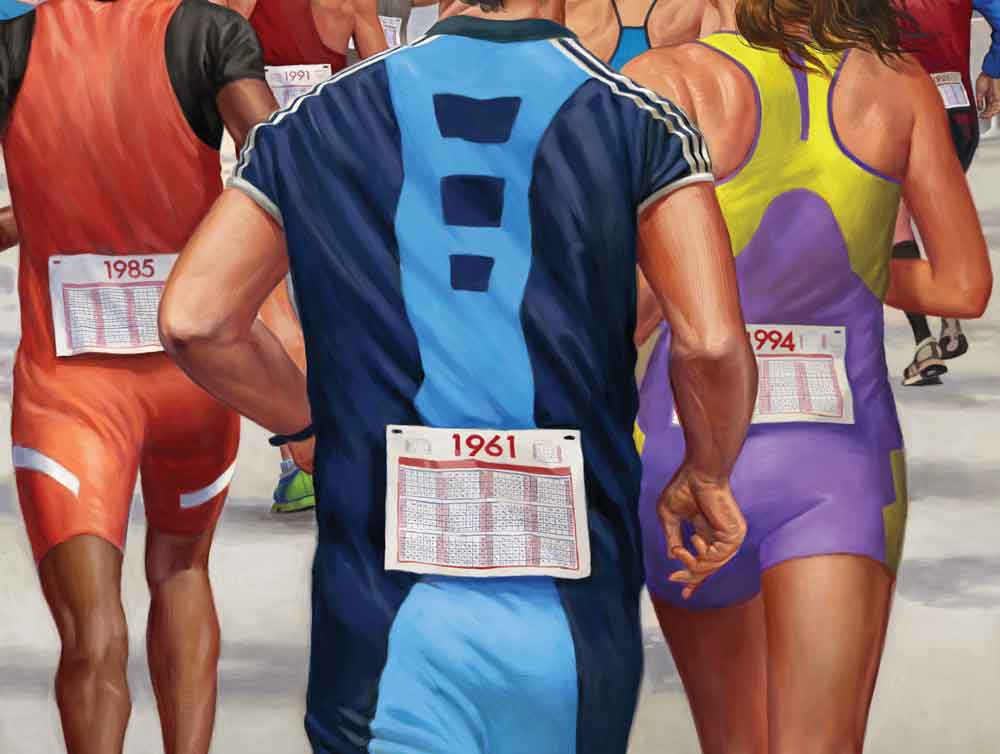A Brief Complaint From a Salty Triathlete: The Term "Age-Grouper" Must Die

Illustration by Matt Collins
Look for a new “Salty Triathlete” from Kelly O’Mara every month in Triathlete magazine.
“Have any age-groupers come through?” I asked the spectators on the side of the Ironman 70.3 World Championship course in Australia in 2016.
“Eh, any what?”
“Age-groupers?”
“Who?”
“Has everyone so far been a professional?”
“Oh, aye, yeah, no amateurs yet, mate.”
It turns out “age-groupers” is not a universal term for those athletes who don’t make a living exercising. And maybe it shouldn’t be a term, period.
Runners are just runners. Some of them are faster than others. Some of them make money; most don’t. There isn’t a world championship for the pseudo-elite runners, the best of the runners who aren’t quite good enough to be the best. Cyclists have categories. Start at the bottom, Cat 4 or 5 (for women or men, respectively), and you’re forced to move up when you get too good. Yet triathletes can stay age-groupers forever.
I asked triathlon oracle Bob Babbitt where the term came from—why do we call triathletes “age-groupers” anyway?
“It started very early on,” he said, way back with legend Valerie Silk, who birthed and nurtured the early days of Kona. “She didn’t want the event to be an elitist event.”
Regular people finishing in the tough heat and humidity is part of what made Kona famous, and letting them compete with a shot at placing in their age divisions created that history. They were called age divisions, then age groups, and the people who raced them became age-groupers, said Babbitt.
In those early days, though, race directors were making it up as they went. How old did the age groups need to be if they’d never had older triathletes before? One 60-year-old triathlete in San Diego would simply call the local race organizers every few years when he had a birthday and demand that a new group be created. (At 60, how could he compete with the 50-year-olds? At 70, shouldn’t he have a new division?)
Now age groups are a hallowed part of the sport, the term has stuck, and it’s just so bleh. I stood at the finish line at Kona at midnight last year and watched the oldest competitor, 83-year-old Hiromu Inada, cross the line. I watched all sizes and ages of people cross the line and be named Ironmen. They’re not age-groupers. They’re triathletes.